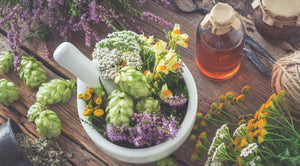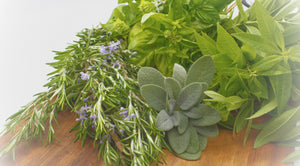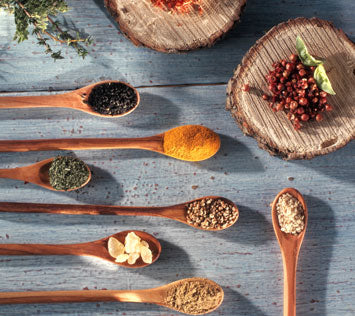Mints are found throughtout the world, but the center of their distribution is in the Mediterranean. In Greek mythology, Pluto was attracted to Minthe. When his wife, Persephone, discovered his transgressions, she transformed poor Minthe into the herb.
Mints come in so many varieties, and all tend to cross breed with each other. Classifying mints is a botanist's nightmare, for they hybridize with stunning ease (and frequency). There are said to be over two dozen true species, and literally countless hybrids (and botanists are still trying, with genetic research, to sort out which is truly what)--one source refers to over 200 named varieties.
This has led to a lot of confusion and even herb experts do not always describe the same species in the same way. Make sure that you buy from trusted herb growers to ensure that you are buying plants that are closest to the true species.
Growing: Mint is very easy to grow. Mint likes full sun but will tolerate some shade. It's not fussy about soil. Unlike so many other herbs, mint likes it moist, so water it often and well and try not to let the soil get dry (it can survive some drought--it can probably survive a direct nuclear hit--but it does better in moist soil).
Also, unlike many other herbs, mint can use some good fertilizing annually; that's probably best applied in late summer. Plant different varieties a couple of yards apart to avoid cross-pollenation.
The first thing to remember when planting mint is that it is highly invasive. In small gardens, confine mints to tubs or pots buried in planting beds. Plants in the mint family are very hardy perennials with vigorous growth habits.
Mint, left to its own devices, will spread quickly and become a nuisance. However, it is very popular as a flavorful herb and the plants can be grown easily. Just try to choose a spot where you won’t mind the rampant growth or grow it in a confined space. Mint really wants to be a ground cover.
The long branches grow upward and then flop over and root, spreading the plant wherever it can reach. Don't be afraid to cut and prune ruthlessly, even right down to the soil (you can, and perhaps even should, do that a couple of times a year, to keep it from going woody).
Harvesting: Use only freshly harvested leaves: mint's flavor does not well survive attempts to dry or preserve it. When harvesting from any mint, the best leaves to use are the top bud and first two leaves; pinch out the growing tip rather than cut a whole stem.
Uses: The key to wise acquisition of a mint plant or plants is to decide the likely culinary use of the herb. Of all the mints, peppermints have the strongest flavor and offer great versatility for those who love mint.
This variety does have hint of pepper and is high in menthol; it is good in cooked dishes, jellies and mint sauces and makes a stimulating tea. Spearmint's are milder and sweeter than peppermints and are good in salads or wherever a light flavor is desired.
The aroma, sweet citrus flavor and small leaves of apple mint make it good in confections, candy and punches.
Orange mint is highly perfumed with a strong citrus flavor similar to that of Earl Grey tea. It is good in iced drinks and as a tea; perfect for fruit preserves, butters, desserts and fruit salads.
Even more so than with many other herbs, it is critical to the culinary use of mint to add it to a cooked dish only at the very last possible instant; not only do its essential oils vaporize quickly, but it blackens very easily in heat.
For more information, check out this site!






